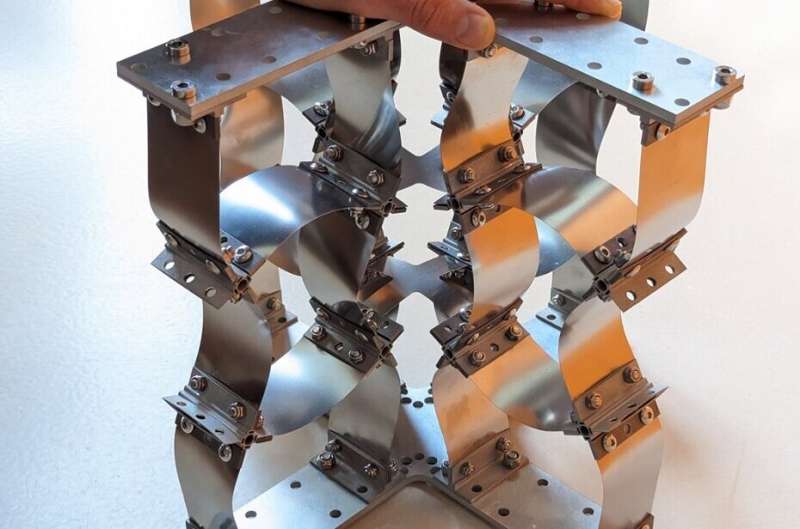Science Daily June 2, 2023
Many passive damping methods rely on using low stiffness, complex mechanical structures, or electrical systems, which render them unfeasible in many of applications. Researchers in the Netherlands have developed a new method for passive vibration damping by allowing buckling of the primary load path in mechanical metamaterials and lattice structures, which sets an upper limit for vibration transmission: the transmitted acceleration saturates at a maximum value in both tension and compression, no matter what the input acceleration is. This nonlinear mechanism leads to an extreme damping coefficient —orders of magnitude larger than the linear damping coefficient of traditional lightweight structural materials. The researchers demonstrated this principle experimentally and numerically in free-standing rubber and metal mechanical metamaterials over a range of accelerations. They showed that damping nonlinearities even allow buckling based vibration damping to work in tension, and that bi-directional buckling could further improve its performance. According to the researchers buckling metamaterials pave the way towards extreme vibration damping without mass or stiffness penalty, and as such could be applicable in a multitude of high-tech applications, including aerospace, vehicles, and sensitive instruments… read more. Open Access TECHNICAL ARTICLE

A buckled material that is both stiff and good at absorbing vibrations. Credit: Advanced Materials, 18 May 2023